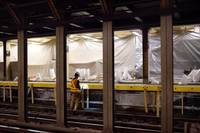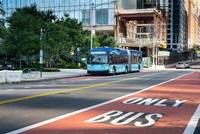Share
Usage of public transportation in the U.S. saves 6 billion gallons of gasoline and reduces the nation’s carbon emissions annually by 63 million metric tons. Sally Librera, Americas Transit Market Leader and Senior Vice President at AECOM, reinforced how the transportation industry was playing a key role in driving ESG outcomes.
“The work that you’re each doing every day, which is moving millions of people via the most efficient and sustainable means possible, is absolutely so squarely in that space. So probably the single biggest thing that we can be doing as transit providers is encouraging transit as a mode of choice,” she said.
NYC Transit agencies improving their environmental performance is a key pillar of reaching their ESG targets, with the electrification of their services a critical element. Rich Davey, President of NYC Transit Authority, said that the MTA has, “a very ambitious effort to convert our entire… 6,000-bus fleet to electric buses by 2040.”
He also pointed to efforts to ensure the MTA’s electricity supply was as low-carbon as possible while also looking to cleaner energy sources such as hydrogen for its future needs.
Cathy Rinaldi, President of MTA Metro-North Railroad and interim President of Long Island Rail Road, highlighted the importance of providing services to all communities through projects such as Penn Access, which will give people in the Bronx enhanced mobility through improved access to the regional transit network
“That project is really being discussed through the lens of equity,” she said. “The extent to which you’ve got communities within the Bronx who really do not have access to a reliable rail option to be able to travel, get to doctors’ appointments or see family.”
Hear more about how the NYC transit leaders are embracing ESG:




